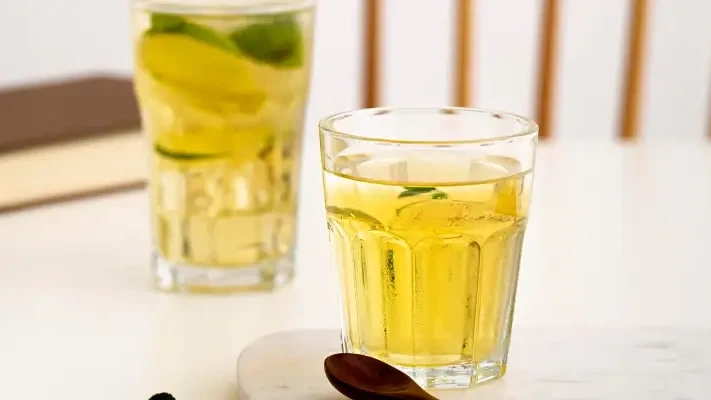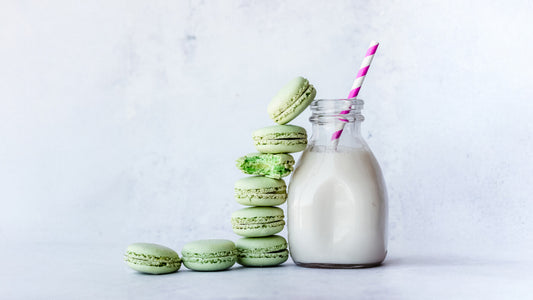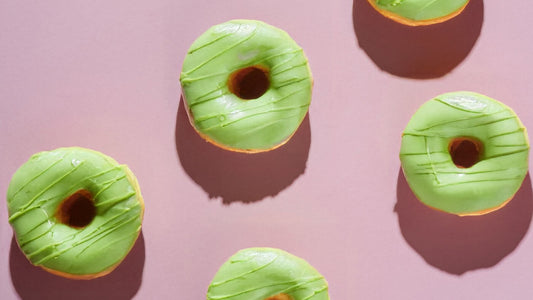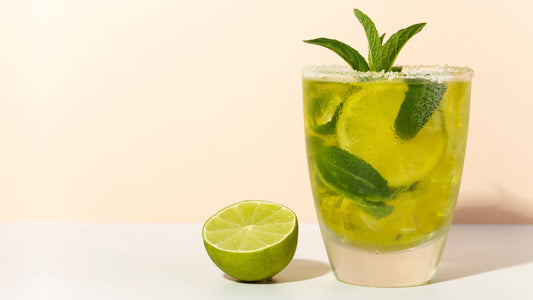What is Cold Brew Green Tea?
Now that we’ve covered how to cold brew tea, let’s talk about what cold brew green tea is. Cold brew green tea simply refers to tea that has been brewed with cold water. This distinguishes it from tea that has been brewed with hot water and then cooled off.
Tea that is brewed hot and served cold may seem similar to cold infused tea, but in reality they are very different. In the end, it all comes down to the extraction.
Cold Brew Green Tea vs Cooled Tea
As we’ve seen in various tea experiments, the taste of cold brew green tea is very different from cooled off hot tea. This is because when the tea leaves are infused into cold water, different components are extracted from the leaves.
Cold infused tea tends to be smoother and sweeter, because less of the bitter components are extracted from the leaf. These bitter components are only extracted at either a higher temperature or a longer brewing time.
What are the Benefits of Cold Brew Green Tea

In addition to being cool and refreshing, cold brew green tea also has benefits that go beyond its temperature. The cool water extracts less of the bitter catechins from the leaf, but it still extracts plenty of the smooth and sweet theanine.
What is Theanine?
Theanine is the amino acid inside the tea leaf that gives green tea its sweet and savory flavor. The tea plant can be shaded prior to the harvest so that it maintains more of this theanine.
This is the reason why shaded teas like gyokuro and kabuse sencha have that strong sweet and savory flavor. When you brew gyokuro tea cold, you still get plenty of flavor, but less of the bitterness.
The Effects of Theanine
In addition to providing a nice sweet flavor, theanine also brings some wonderful health benefits to the green tea. Theanine is able to cross the blood brain barrier, and it is thought to induce a calming effect on the brain.
This could be why tea drinkers report having a longer lasting, calm alert feeling throughout the day. L-theanine buffers the side effects of caffeine, so you can get the energy without the crash or the jitters.
Which Teas Make the Best Cold Brew Green Tea?
One of the downsides of cold brew green tea is that it lacks the raw strength of hot brewed green tea. If you want to make delicious cold infused tea, you need to find a tea that can deliver a lot of flavor. Here are a few of our favorites.
Gyokuro
As we mentioned before, gyokuro tea can be used to make delicious cold tea infusions. This premium green tea packs plenty of that savory or “umami” flavor thanks to the long shading process, and when it’s cold brewed, it can even pick up a hint of fruitiness.
We like to use a blended gyokuro for our cold tea infusions like the Sasa Hime, as this tea creates a well-balanced and smooth flavor profile.
Fukamushi Sencha
While all sencha tea is steamed after harvest, some senchas are steamed for longer than others. These are known as fukamushi sencha or deep steamed teas. During the longer steaming process these teas take on a stronger flavor that works great as a cold brew.
Fukamushi senchas like the Yamaga no Sato take on a darker green color and a smoother and fruitier flavor when prepared as a cold brew.
Matcha-iri Sencha
To make some of the most powerful cold tea infusions, you can use what’s called matcha-iri sencha, which is made by mixing matcha powder into sencha leaves. This matcha powder is released into the water to create a cloudy green cold water infused tea and a rich fruity flavor.
The Shizuku sencha is designed to be the perfect tea for cold brew and it creates a rich and powerful flavor both as a hot tea and as a cold brew green tea.
Karigane
Karigane tea may not be as powerful as some of the other cold tea infusions, but it does strike a good balance. This tea is made from the stems and leaves of shaded tea plants, like those used to make gyokuro.
From the shaded leaves, you get the sweet umami you might expect from a cold infused tea like gyokuro, but from the stems you get a mild straw flavor. This cold brew green tea is quite fruity and it has a hint of cucumber in the finish.
Inspirations for Cold Tea Infusions
If you want to make cold infused tea even better, there are a few things you can try!
How to Make Cold Brew Green Tea Cooler
You may be tempted to add ice cubes to your cold tea infusions, but as these melt they will water down the drink and dilute the flavor.
We recommend leaving your cold brew green tea in the fridge so it’s nice and cool for you when you drink it, but if you must use ice cubes we suggest you use green tea ice cubes, made by pouring green tea into an ice cube tray and freezing it overnight.
How to Make Cold Brew Green Tea more Flavorful
If you want to make your cold tea infusions even more flavorful, you can add frozen fruit to the drink. This will accomplish two things. First, it will help keep your cold water infused tea cooler without diluting the flavor.
This will also add a nice fruity flavor to your cold brew green tea, which will pair well with the naturally sweet and smooth flavors of the cold tea infusions.
Alcohol drink
If you want to spice up your night while keeping the cold brew vibe, we strongly recommend our recipe Green Tea Alcohol Long Drink made by a mixologist! It's one of the favorite recipe of our readers 🍸
How to Make Cold Water Infused Tea Even Better
Of course you can prepare cold water infused tea the traditional way, but if you really want to spice things up, you can use the Kooridashi method.
This is where you fill up a teapot with ice cubes, put some tea leaves on top and let the melting ice cubes brew the tea leaves overtime. This will brew the tea at a temperature just above freezing, so the cold water infused tea will be even sweeter.
This process will take a little while, so you can set up the ice cubes before you do chores or run errands and when you come back, you should have a nice pot of cold infused tea!





